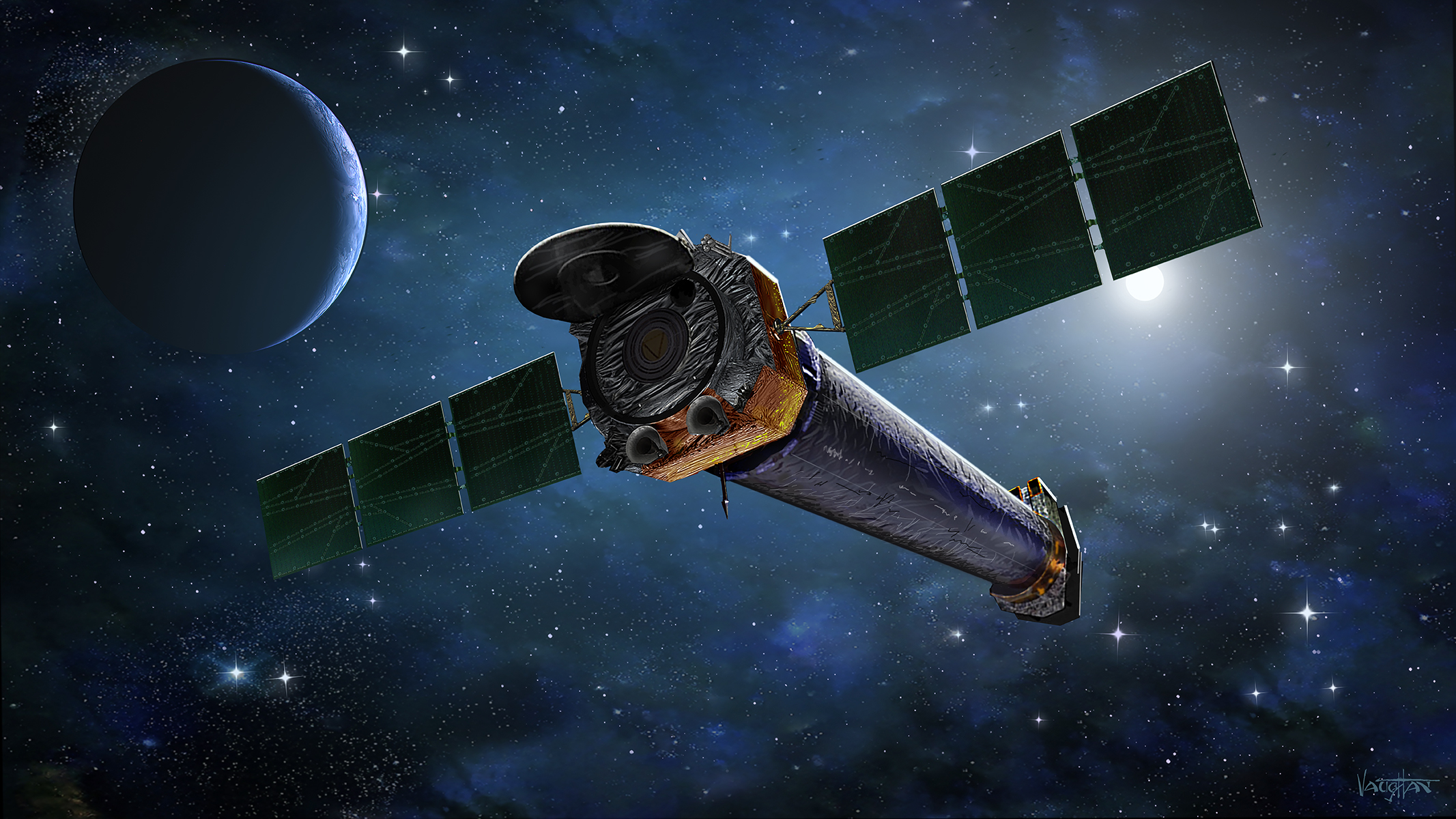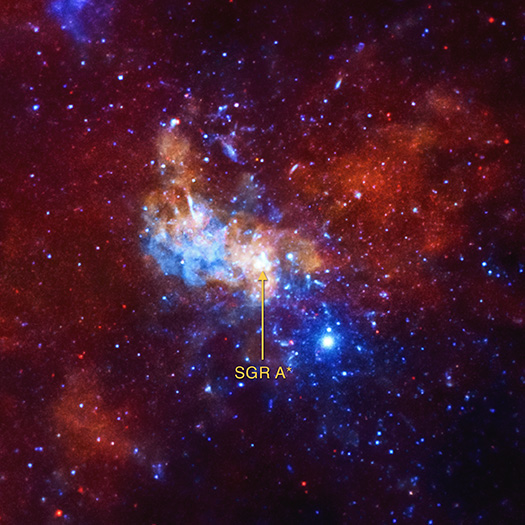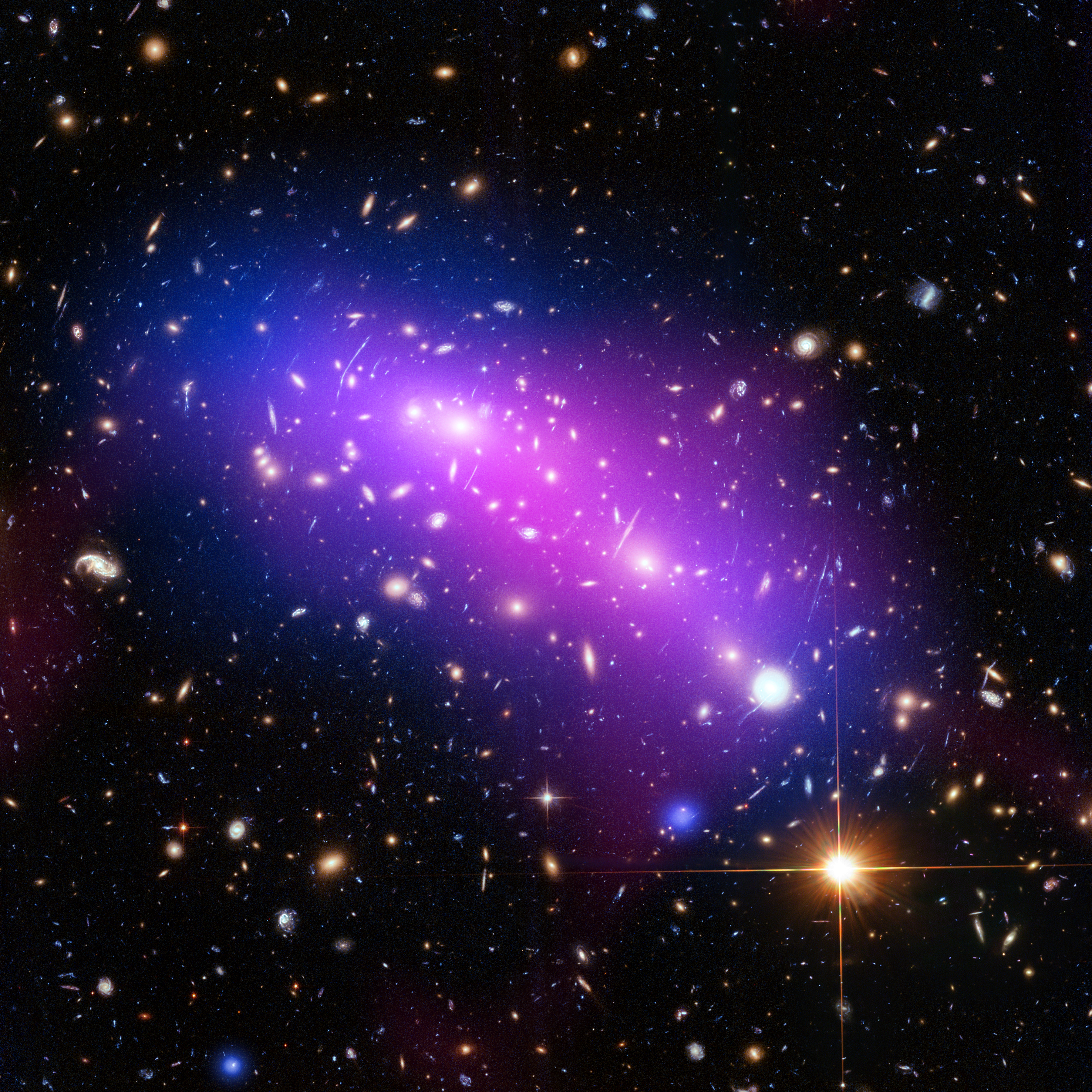Astrobite written by Graham Doskoch, Magnus L’Argent, Maria Vincent, Samantha Wong, and Huei Sears

“We ask fundamental questions about the nature of the cosmos, not in idle curiosity but of necessity.” Put to paper in 1986, that sentence set the tone for the next four decades of space-based astronomy. It was the opening to a short booklet, chiefly written by Martin Harwit and Valerie Neal, explaining NASA’s boldest new astronomical venture: the Great Observatories program. Consisting of four world-class space-based telescopes spanning the electromagnetic spectrum, the Great Observatories were tasked with addressing the deepest problems in astrophysics, from the nuclei of atoms to the nuclei of galaxies, from the origin of the universe to the origin of life. “We are lured to frontiers,” wrote Harwit and Neal. “The space frontier is not merely a place to be; it is a place to know – a venture of the mind and spirit.” The Great Observatories would be built with the understanding that asking questions about the world is an intensely human undertaking – and an indispensable one.
Each telescope would see the universe in its own way. Hubble gazes with eyes sensitive to ultraviolet, optical, and near-infrared light; Compton searched for high-energy gamma rays; Spitzer peered in the infrared. Joining Compton in the high-energy regime was the Chandra X-ray Observatory. In some ways, Chandra is the oddball of the bunch. The only Great Observatory not named after a natural-born American, it was sent into an eccentric, high-inclination orbit protected from the Van Allen belts. Its iridium-coated mirrors gently guide X-rays toward four instruments: a camera (HRC), two gratings (LETGS and HETGS), and a camera/spectrometer hybrid (ACIS). Chandra’s exceptional capabilities come from its world-class optics and finely-constructed plates and gratings; it can resolve details less than an arcsecond across within a 30 x 30 arcminute field of view and span two orders of magnitude in energy, from 0.08 to 10 keV.
Despite a quarter century of unparalleled success, today Chandra faces the prospect of cancellation. NASA’s most recent budget request dramatically reduces funding for the observatory in the coming years, forcing significant layoffs and an eventual end to science operations. To understand this potential tragedy, we need to discuss budgets, advocacy, and frontiers: The frontiers Chandra has already probed and the frontiers we risk leaving unexplored if we undervalue those ventures of the mind and spirit.
Chandra is an amazing scientific instrument
Chandra is an X-ray observatory, which allows astrophysicists to map both hot gas that is critical to understanding the formation of the stars and galaxies that make up our universe as well as high energy particles that belong to extreme systems, such as supermassive black holes, supernova explosions, and more. Best known for its incredible angular resolution, Chandra is still unmatched amongst X-ray observatories today. In fact, Chandra’s spatial resolution is so good that it would be able to read the letters on a stop sign from twelve miles away. In an astronomical context, this allows us to view incredible detail in objects both within the Milky Way and beyond, resolving the X-ray background and revealing point sources and structures in systems shrouded in dust and gas that were previously unremarkable. Additionally, Chandra has pretty good time resolution (normally 3.2s, but 0.5s resolution can be achieved), which enables it to study variable systems like X-ray binaries, active galactic nuclei (AGN) and their jets, transient events that are either too faint to be picked up by other X-ray telescopes or that require Chandra’s bulls-eye precision to pick them out of messy regions.
There are countless other impressive achievements that Chandra boasts: the discovery of sound waves from supermassive black holes, direct observation of dark matter’s effects in the Bullet Cluster, understanding the afterlives of stars with detailed observations of supernova remnants and pulsar wind nebulae, and much, much more. Some of Chandra’s major discoveries in its first five years of observing can be found here along with a non-exhaustive list of achievements as well as a short documentary are available here.

Ongoing and future science
Dr. Daryl Haggard, a professor at McGill University, has worked on X-ray astronomy (and has used Chandra) for the entirety of her career in astrophysics, starting with searches for X-ray binaries in globular clusters during her PhD and then moving on to studying AGN during her postdoc, which she continues to research today. She currently works on two projects that heavily involve Chandra data. The first is a search for X-ray flares originating from Sgr A*, the Milky Way’s resident supermassive black hole – an object that’s surrounded by lots of dust and gas that make it impossible to study it in optical or infrared wavelengths. This work is done as a part of the Event Horizon Telescope (EHT) collaboration – the team behind the donut-like images of supermassive black holes – to which Chandra is an integral part of the multiwavelength effort. Secondly, she works on looking for multiwavelength counterparts to gravitational wave events. For both of these projects, Chandra is crucial for both enabling the resolution of both dim sources and being able to pinpoint any observed X-rays to a specific source of origin.
“[Sgr A*] is just a fantastic science case for Chandra; there is no other instrument that can monitor the faintest flares or confidently identify the point source emitting the additional radiation. I mean, it’s just an X-ray mess in the galactic center.”
At the time of the announcements of the cuts to Chandra’s budget, Dr. Haggard was working on a proposal to the Chandra Legacy Program, which uses deep Chandra exposures to try and answer some of the biggest open questions about the universe. Her team aims to take deep exposures of nearby galaxies to identify structures similar to the Fermi bubbles in our own Galaxy and identify other AGN feedback interactions between the stellar body and halo of the galaxies. Many other large projects include Chandra as a key instrument, such as EHT multiwavelength campaigns, gravitational wave follow-up, synergy with JWST, and future campaigns in transient follow-up with the upcoming Vera C. Rubin Observatory. These projects won’t be able to accomplish the same science goals without Chandra’s incredible X-ray resolution, which will leave a gaping hole in the X-ray landscape for at least a decade until the next generation of X-ray observatories (e.g, Star-X and Lynx) is launched.
“It’s just that development takes time and energy and dollars, and Chandra works now, …there’s just not a good reason to shut down something that’s working so well. Then you really are blind for decades”, Dr. Haggard says about the uncertain future of upcoming high-resolution X-ray observatories.

What is going on with NASA’s budget?
So how did we get here? On March 11, NASA released its Budget Request for fiscal year 2025. The budget follows a concerning trend of decreasing funding for NASA in the past few years. The overall NASA budget is 2% lower than what it received the year before and is 8.5% less than what was requested in total, mostly due to House of Representatives Bill 3746, which put a cap on non-defense discretionary spending. Meanwhile, the Department of Defense’s budget has increased from an astonishing $842 billion in 2023 to $849.8 billion in 2024, leaving NASA’s budget at a mere 3% of the total US military budget. Operating with a smaller pool of money, NASA administrators have been forced to cut funding to certain programs. Notably, the new request would cut Chandra’s budget by a staggering 40%, from $68.3 million in 2023 to $41.1 million in 2024. This reduced operating budget means half of the observatory’s staff could be laid off by October 2024; furthermore, more cuts are projected in the coming years, with the budget reduced to $5.2 million by fiscal year 2029. This loss poses an existential threat to the observatory and could set back the field of X-ray astronomy for years to come.
How you can help!
Despite the disappointing budget, there is still hope for saving Chandra! Shortly after the announcement of the Budget Request, a group of astronomers began #SaveChandra, a grassroots effort to inform the scientific community and the public about the threat to the observatory and encourage people to advocate for the continuation of Chandra’s operations. The movement is spurred on not simply by what the telescope has done in the past, but by what the future could hold if Chandra maintains its scientific operations. SaveChandra.org has outlined key actions you can take now to help increase funding for Chandra and create awareness. Already, on March 28, an open letter with 87 pages of signatures was submitted to NASA Administrators urging support for Chandra. Through the fiscal year 2025 Appropriations Process, it is still possible for Congress to change the budget if we can to advocate and gain support.
Here’s what you can do:
- If you’re in the United States, contact your local Congressional representative.
Congress ultimately has the power to save Chandra, and hearing from undergraduates, graduate students, professors, postdocs, staff scientists, and passionate members of the general public can make a big impact in making our voices heard. Call them directly and ask that Chandra be restored to full funding. Talk to legislators in a positive light, highlighting the amazing science Chandra has helped accomplish and how the telescope is still in a healthy shape. One important detail to mention is how highly Chandra was ranked in 2022 by NASA and the synergy it will have with JWST.
- Keep talking to your department and colleagues about Chandra.
Encourage others around you to help campaign for Chandra. The data from Chandra has enabled and will enable the work of hundreds of students and professors and collaborations, and losing that could mean the end of many meaningful contributions to X-ray astronomy. The observatory could also lose around 200 team members, meaning the sudden disappearance of a huge amount of X-ray astronomy experience and knowledge.
Dr. Haggard made sure to emphasize how much help the Chandra staff have been with scheduling her observing runs with the telescope and their ability to work within tight time constraints:
“The team that runs Chandra is just fantastic…they are responsive to the community and just lovely, wonderful, helpful…they are an incredible team that works really hard to make our science happen, it’s an exceptionally good team.”
3. Show off the amazing science that Chandra can do.
If you are someone who uses Chandra in your research or just generally excited about X-ray astronomy, now is the time to highlight the unique science that only Chandra is able to do! Continuing to use Chandra data and results in papers, conference presentations, public talks, or other scientific or popular media helps reinforce that we have a lot to lose by defunding Chandra.
For astronomers, continuing to propose Chandra observations and demonstrate that Chandra data is relevant to new projects is also important for demonstrating the necessity for this instrument for all the incredible science that has yet to be done. Although both the proposal deadlines for the Chandra legacy program and Cycle 26 are coming up, we hope that there will be future proposal cycles and encourage astronomers to consider using Chandra for future observing campaigns. Additionally, Chandra offers both target of opportunity observations (ToOs) and Director’s discretionary time (DDT) for really compelling science cases (usually observations of transients or other time sensitive
4. Spread awareness on social media.
Share this bite and other articles like it far and wide. Read through https://www.savechandra.org/ and share it with as many others as you can! This short video is a great summary of the #SaveChandra campaign and is another good option for sharing.
Chandra isn’t past its prime
Most early-career astronomers have never known a time without at least one Great Observatory. We’ve grown up with sweeping vistas of stellar nurseries, with pictures of waves of gas the size of galaxies, with systems teeming with potentially-habitable planets – with a more intimate view of the cosmos than any generations before. Thanks to these telescopes, daring to ask big questions about the universe doesn’t seem revolutionary; it seems like common sense. The Great Observatories may have spoiled us, but they have undeniably also inspired us to chase new frontiers.
We have also seen the Great Observatories grow old. Compton was deorbited in 2000; Spitzer powered down in 2020. Chandra and Hubble are aging and will, eventually, become telescopes of yesteryear. Astronomers born in the 2010s and 2020s will come of age with the wonders to be found by JWST and Roman, as well as a slew of other innovative instruments. But we are still multiple decades away from the rise of the New Great Observatories, a trio of telescopes that will take up the mantle of providing a way for the universe to know itself.
Until the torch is passed, the two remaining Great Observatories must keep operating for as long as possible. Yes, they give us breakthroughs from the innermost regions of the Solar System to the furthest reaches of the universe; yes, their multiwavelength data show richer views of the cosmos than ever before; yes, they have addressed questions that have been unanswered for decades – and asked new questions for the future. But more than that, they have inspired us by embodying the notions that no question is too big and that the pursuit of knowledge holds intrinsic, irreplaceable value. The United States Congress must take action and give Chandra the budget it desperately needs and ultimately deserves.

Astrobite edited by Sowkhya Shanbhog
Featured image credit: NASA/CXC & J. Vaughan




